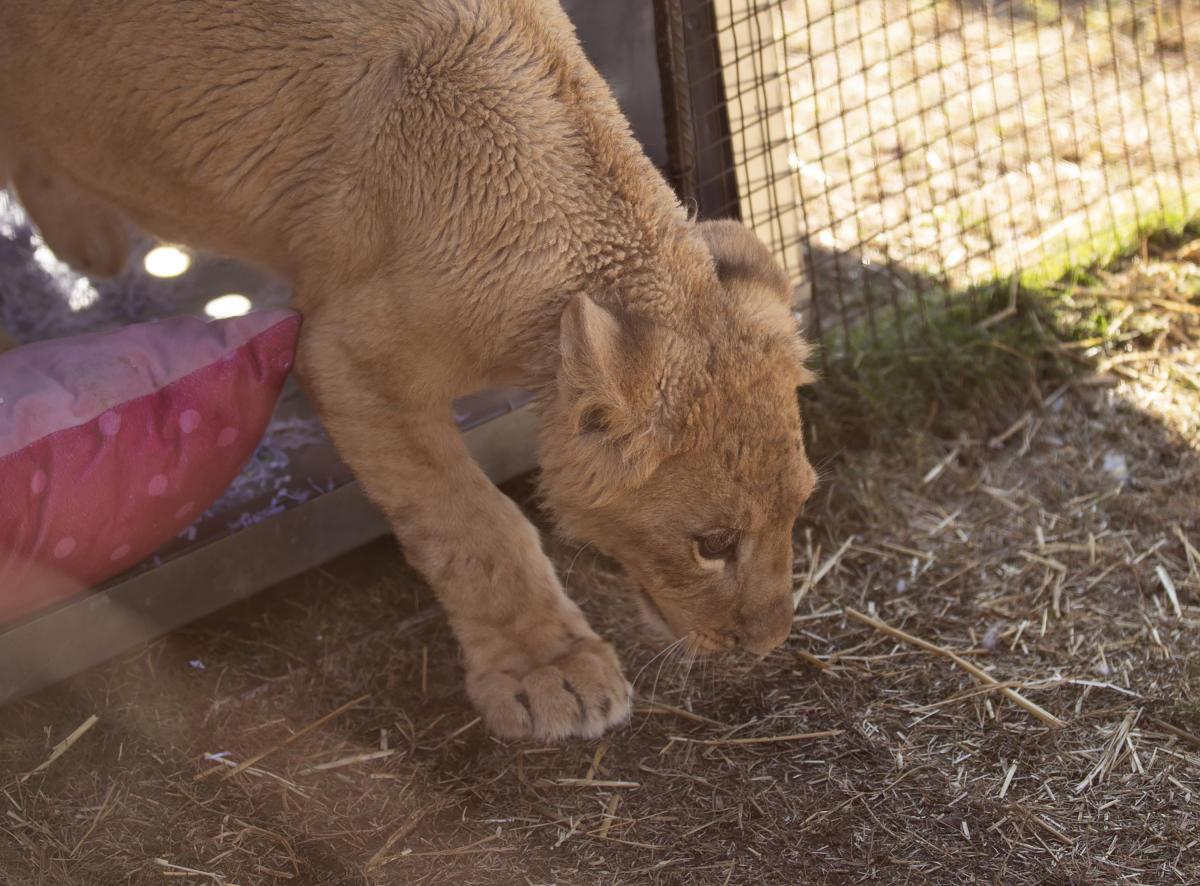PAARL, South Africa (AP) — Freya, a 6-month-old lion cub rescued from the wildlife trade in Lebanon, curiously poked her nose out of her transport crate and sniffed the air. Contentedly, she took her first tentative steps into her new permanent home at a sanctuary in South Africa.
Freya’s move to Drakenstein Lion Park is only a partial success story.
She will never live as a lion should in the wild. She has been given a lifelong sanctuary at Drakenstein, where other lions have been taken in from zoos and circuses in France, Chile, Romania and elsewhere. Some have terrible backstories of abuse, which are written on placards in the sanctuary: Ares was blind and neglected when he was rescued. Brutus had been beaten so badly that his jaw was broken.
But now that Freya has taken up residence at Drakenstein, animal welfare groups have once again drawn attention to South Africa’s conflicted position when it comes to the species that is often symbolic of African wildlife.
South Africa, with an admirable reputation for conservation and ethical reserves such as Drakenstein, also has a thriving trade in captive lions, with the big cats bred for petting and other encounters, as well as for killing in ‘canned hunting’ experiences or for the lion bone trade.
South Africa has special permission under the CITES Convention on Trade in Endangered Species of Wild Fauna and Flora to export lion bones and skeletons, primarily to Southeast Asia for use in traditional medicines. Canned hunting, where lions are hunted and shot in enclosures without a chance of a fair chase or escape, is also legal.
Animal welfare groups have been calling for an end to captive breeding of lions. The South African government recently announced plans to close the industry, and it is expected to take two to three years if there are no legal challenges.
It’s a stain on South Africa’s conservation brand, said Audrey Delsink, the African wildlife director for Humane Society International, who was involved in Freya’s relocation. She said it was important for people to realize that the cute cubs used for petting in some South African parks — but not at Drakenstein — end up being big lions shipped off to be killed.
“They’re taken from their mothers, hand-raised so you can take selfies with them and enjoy them, and then ultimately the same lions are shot for trophies in a camp they can’t escape from, and they end up as a bag of bones,” Delsink said.
There are more than 300 lion sanctuaries in South Africa, with more than 7,000 lions. That’s double the number of lions in the wild in South Africa. Campaigners against the business say it should be made clearer to visitors that the vast majority of South Africa’s lions live in cages in the world’s largest lion sanctuary industry.
“We can no longer pull the wool over the eyes of tourists,” said Delsink.
As for Freya, her rescuers hope she will eventually bond and live in the same enclosure as the young male Pi, who they believe is her brother and was taken from Lebanon in April.
Pi was illegally trafficked and was in the hands of a man who used him to promote his TikTok account, said Jason Mier, director of Animals Lebanon, which rescued Pi and Freya. Pi often had his mouth taped shut when he was used for videos or selfies and was locked in a small cage at night. He was kept as a status symbol for his owner, “to show that I’m powerful, I have money, look at me,” Mier said.
Freya and Pi are the latest of nearly two dozen big cats rescued from various situations by Animals Lebanon. Some have come to Drakenstein, where petting cubs or close encounters are not permitted, but visitors are welcome to see the lions and learn more about them.
Freya and Pi would not survive if released into the wild, so the sanctuary is the best option for them. Those involved in Pi’s rescue said they remember seeing the cub experience grass under his paws for the first time at Drakenstein, even though it was in the enclosure where he and Freya will likely spend the rest of their lives.
___
AP Africa News: https://apnews.com/hub/africa
